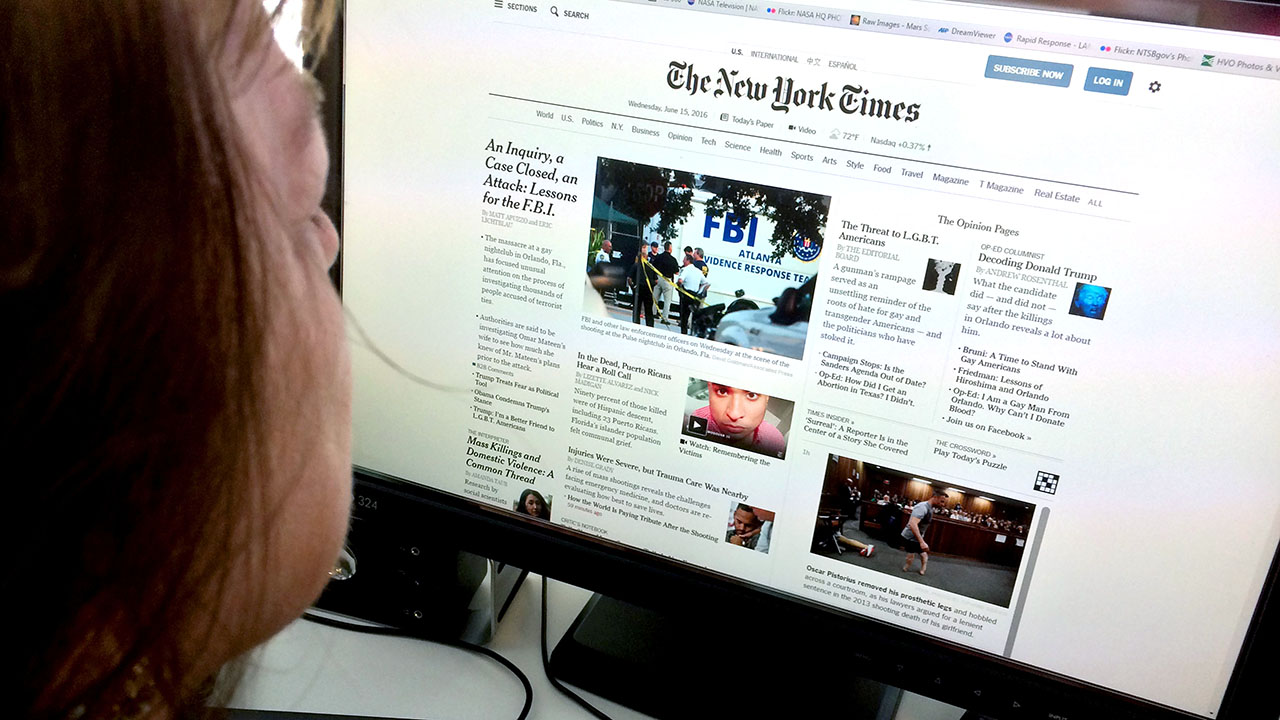What Does News Channels Mean?
What Does News Channels Mean?
Blog Article
How News Channels can Save You Time, Stress, and Money.
Table of ContentsFacts About News Channels UncoveredGetting The News Channels To WorkThe Of News ChannelsNews Channels for Dummies
Moving information networks broadcast news content 24 hours a day. The advent of the net has actually allowed the routine 24-hour-a-day presentation of many video and audio information records, which are updated when added details ends up being offered; numerous television broadcasters provide material originally offered on-air as well as exclusive or supplemental news material on their internet sites.Terminals that utilize a "wheel" layout have a tendency to keep to a set schedule of certain programming at particular details minutes on the hour, and one of these sections is regularly a news. These short publications will certainly offer reviews of any damaging news of rate of interest, and may include local problems such as weather report or traffic reports.

Information broadcasts in the USA were initially transferred over the radio. NBC started programs in November 1926, with CBS entering manufacturing on September 25, 1927. Both at first talked about similar topics, such as political election results, governmental commencements, and various other matters of problem to the public. Nevertheless, NBC soon arised as the leading pressure for enjoyment talent.
How News Channels can Save You Time, Stress, and Money.
A basic change in time happened in the design of the night newscasts in most countries. In the 1950s, tv was novel sufficient that it was taken into consideration amusement. In the 1960s and 70s, television newscasts tended to be abnormally "serious" by later on criteria, featuring even more "hard information" and much less light home entertainment blended in.

From 2000 to 2010, overall viewership of television broadcast news continued to decrease. Some news-adjacent cord programs acquired fame and success in this age (such as the comedy-focused and the commentary-focused ). Their gains did not counter the proceeding high decrease in viewership of mainline network information.
The 7-Minute Rule for News Channels
broadcasts on various other terminals. The National, which has actually broadcast official statement on CBC Television considering that 1954, is the longest-running nationwide network broadcast in Canada. All three networks also create regular newsmagazines: CBC's (broadcast since 1975), Global's (broadcast given that 2008), and CTV's (broadcast because 1966 and presently the longest-running network newsmagazine in Canada). [] CTV's is the single nationwide early morning news program on program tv in Canada, and changed, which broadcast considering that 1975.
Regional Television terminals in the United States generally transmitted local information 3 to 4 times a day on standard: commonly broadcasting at 4:30, 5:00, 5:30, or 6:00 a.m.; noon; 5:00 and 6:00 p.m. in the early night; and 10:00 or 11:00 p.m. Stations that produce neighborhood broadcasts typically transmit as little here as one to as much over twelve hours of regional news on weekdays and as little as one hour to as much as seven hours on weekend breaks; information shows on weekends are generally restricted to early morning and evening broadcasts as the variable organizing of network sports shows (if a terminal is affiliated with a network with a sports division) normally avoids most stations from carrying midday broadcasts (nonetheless a few terminals situated in the Eastern and Pacific time areas do create weekend break noontime newscasts). From the 1940s to the 1960s, program tv stations usually offered local news programs just one to 2 times each night for 15 mins (the regular length for lots of in your area produced programs at the time); generally these programs aired as supplements to network-supplied evening news programs or leadouts for primetime shows.
The 6-Minute Rule for News Channels
In situations where a terminal with an existing news department gets in right into a news share contract, it will result either the 2 departments merging or the straight-out conversion of newscast manufacturing from internal to outsourced production.
These names are meant to set one terminal besides the rest, specifically for viewers that are picked for target market measurement surveys. If the respondent was incapable to provide a network number or call letters, the newscast title is usually sufficient for the appropriate station to get Nielsen rankings debt. [] The Big Three program tv networks produce early morning and night national newscasts.
Report this page